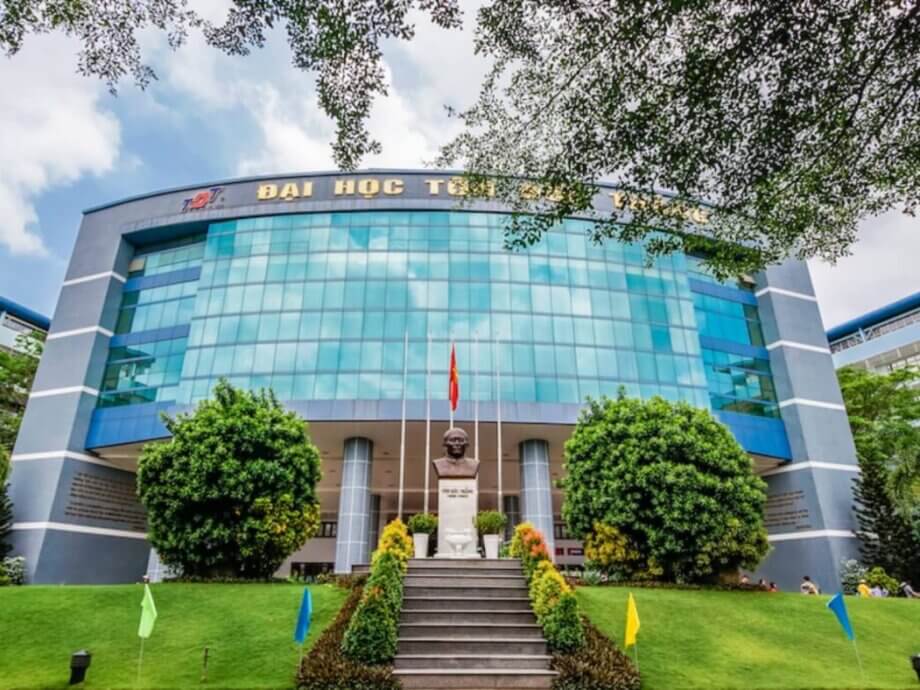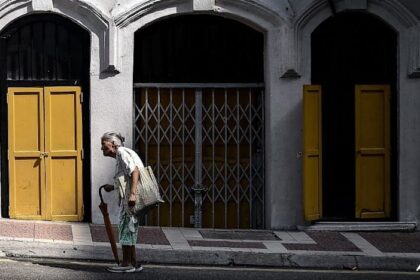Introduction: A Pivotal Year for University Admissions
The 2025 university admissions cycle in Vietnam marks a turning point, as it is the first year students will graduate under the new 2018 General Education Program. This transition brings significant changes to the national high school graduation exam, university selection methods, and the overall admissions landscape. While these reforms aim to modernize and diversify higher education, they also raise pressing concerns about fairness and equal opportunity for all candidates.
- Introduction: A Pivotal Year for University Admissions
- Key Changes in the 2025 Admissions Process
- Concerns Over Fairness: The Risk of Inequality
- Expert Perspectives: Balancing Autonomy and Standardization
- Implications for Students: Navigating a Complex Landscape
- Policy Responses and Recommendations
- Case Study: The Controversy Over Sudden Changes in Admissions Combinations
- Looking Ahead: The Future of University Admissions in Vietnam
- In Summary
Key Changes in the 2025 Admissions Process
Several major adjustments define the 2025 admissions process:
- Reduced Number of Exam Subjects: Students will take only four subjects in the high school graduation exam—two mandatory (Mathematics and Literature) and two electives. This is a shift from previous years, where students often took more subjects.
- Diversification of Admissions Methods: Universities are increasingly using a variety of selection methods, including high school exam scores, academic transcripts, competency and thinking assessment tests, international certificates, and direct admissions for outstanding achievements.
- Unified Scoring System: All admissions methods must now be converted to a common scoring scale, typically based on the high school graduation exam, to ensure comparability.
- Limit on Early Admissions: Early admissions (before the main exam results) are capped at 20% of total enrollment quotas, and the minimum score for early admissions cannot be lower than the main round’s cutoff.
- Online Registration and Transparency: All application processes are conducted online, with strict deadlines and requirements for transparency in admissions criteria and scoring conversions.
These changes are designed to increase flexibility and autonomy for universities, while also aiming to create a more transparent and equitable system for students nationwide.
Concerns Over Fairness: The Risk of Inequality
Despite the intended benefits, the new system has exposed several risks that could undermine fairness in university admissions:
1. Disparities in Competency Assessment Test Scores
One of the most debated issues is the significant difference in scores between the two rounds of the competency assessment test organized by major universities such as Vietnam National University Ho Chi Minh City (VNU-HCM). In 2025, over 223,000 candidates participated, with the second round showing a much higher average score than the first—an unprecedented gap of over 100 points. Experts note that this discrepancy cannot be fully explained by better preparation or repeat test-takers, suggesting inconsistencies in test difficulty or standardization between rounds.
This raises the question: Is it fair to use results from both rounds interchangeably in admissions? If not properly standardized, candidates who only took the first round may be at a disadvantage compared to those in the second round, potentially violating the principle of equal opportunity.
2. The Challenge of Score Conversion Across Methods
With universities required to convert scores from various admissions methods (e.g., high school exam, competency tests, academic transcripts, international certificates) to a common scale, the technical complexity increases. Methods such as percentile ranking, z-scores, and linear regression are used, but each has limitations. For example, percentile conversion assumes the underlying tests are equivalent in purpose and difficulty, which is rarely the case.
Dr. Nguyen Quoc Chinh, Director of the Center for Educational Testing and Quality Assessment at VNU-HCM, cautions:
“It is fundamentally incorrect to force all admissions methods onto a single evaluation scale, as each method measures different competencies and serves different purposes.”
Without careful calibration, score conversion can introduce bias, favoring candidates from certain backgrounds or with access to specific resources.
3. Proliferation of Admissions Combinations and the “Lottery Effect”
Universities are now offering a vast array of subject combinations for admissions—some programs have up to 42 different combinations. While this increases flexibility and allows more students to compete, it also creates confusion and the risk of “combination inflation,” where some combinations may not include core subjects relevant to the chosen major. This can lead to situations where students are admitted to programs without adequate preparation, potentially affecting academic quality and fairness.
4. Early Admissions and the 20% Quota
Early admissions, often based on academic transcripts or international certificates, are now limited to 20% of total quotas. This aims to prevent the “rush” of early admissions that previously disadvantaged students relying solely on the national exam. However, the implementation of this rule is complex, and universities must ensure that early admissions do not set lower standards than the main round, which could otherwise create unfair advantages.
Expert Perspectives: Balancing Autonomy and Standardization
The Ministry of Education and Training (MOET) has emphasized the need for both university autonomy and standardized, transparent admissions processes. The new regulations require universities to publish detailed conversion formulas, statistical data, and admissions criteria well in advance. However, some experts argue that the current guidelines are still too vague, leaving room for inconsistent application across institutions.
Dr. Hoang Ngoc Vinh, former Director of the Department of Professional Education at MOET, points out:
“Converting scores between different admissions methods can dilute the original intent of each method and may reduce fairness in the selection process. Each test or method has its own objectives and measures different aspects of student ability.”
Others, like Dr. Sai Cong Hong, former Deputy Director of the Quality Management Department, stress the need for robust statistical analysis and ongoing adjustment of conversion formulas based on real-world data to minimize bias and ensure fairness.
Implications for Students: Navigating a Complex Landscape
For students, the 2025 admissions cycle presents both opportunities and challenges:
- More Choices, More Confusion: The diversity of admissions methods and subject combinations means students must carefully research and strategize their applications. Those who fail to understand the new rules or miss key deadlines risk losing out on opportunities.
- Geographical and Socioeconomic Disparities: Students in urban areas or with access to better information and resources may have an advantage in navigating the complex system, while those in rural or disadvantaged regions could be left behind.
- Preparation for Multiple Tests: With the rise of university-specific competency and thinking assessments, students may feel pressured to prepare for multiple exams, increasing stress and financial burden.
- Importance of Timely Information: All application steps are now online, and missing a single deadline can mean losing the chance to compete. Students must be proactive in updating themselves on new regulations and procedures.
Policy Responses and Recommendations
Recognizing these challenges, MOET and educational experts have proposed several measures to enhance fairness and transparency:
- Standardize and Publicize Conversion Methods: Universities must use scientifically validated methods for score conversion and publish them in advance, allowing students to understand how their results will be evaluated.
- Limit the Number of Admissions Combinations: To prevent confusion and maintain academic standards, universities are encouraged to restrict the number of subject combinations and ensure they align with the core competencies required for each major.
- Enhance Support for Disadvantaged Students: Targeted information campaigns and counseling services should be provided, especially in rural and remote areas, to ensure all students have equal access to admissions information and opportunities.
- Continuous Monitoring and Adjustment: Admissions data should be analyzed annually to identify and correct any emerging biases or unfair practices, with adjustments made to conversion formulas and admissions policies as needed.
MOET has also called for universities to avoid last-minute changes to admissions criteria or subject combinations, as such actions can unfairly disadvantage students who have already made their study plans.
Case Study: The Controversy Over Sudden Changes in Admissions Combinations
In 2025, a notable controversy arose when the University of Social Sciences and Humanities (Vietnam National University, Hanoi) abruptly removed the C00 combination (Literature, History, Geography) from admissions for 17 majors, just weeks before the national exam. Many students who had spent years preparing for this combination found themselves unable to apply, highlighting the need for stricter regulations on the timing and communication of admissions changes.
This incident underscores the importance of clear, early, and stable information for students, as well as the need for legal safeguards to prevent arbitrary changes that could harm candidates’ interests.
Looking Ahead: The Future of University Admissions in Vietnam
The 2025 admissions cycle is a test case for Vietnam’s efforts to modernize and diversify its higher education system. While the reforms offer greater flexibility and autonomy, they also demand higher standards of transparency, standardization, and fairness. The success of these changes will depend on the ability of policymakers, universities, and students to adapt, communicate, and continuously improve the system.
As Vietnam moves forward, the ultimate goal remains clear: to create a university admissions process that is both competitive and equitable, ensuring that all students—regardless of background—have a fair chance to pursue higher education and contribute to the nation’s development.
In Summary
- The 2025 university admissions process in Vietnam introduces major changes, including fewer exam subjects, diversified admissions methods, and a unified scoring system.
- Concerns about fairness arise from disparities in test scores, challenges in score conversion, proliferation of admissions combinations, and the management of early admissions quotas.
- Experts emphasize the need for scientific, transparent, and standardized conversion methods to ensure equal opportunity for all candidates.
- Students must be proactive in understanding new rules, meeting deadlines, and preparing for multiple admissions pathways.
- MOET and universities are urged to enhance support for disadvantaged students, limit arbitrary changes, and continuously monitor the system for fairness and effectiveness.
- The 2025 cycle is a critical test for Vietnam’s higher education reforms, with long-term implications for access, quality, and social equity.












